March 6: We All Live from the Land: Seeds of Recognition, Recognition of Seeds with Dr. Harriet Friedmann
In a time when more people live in cities than the countryside, it is challenging to think through the implications that we all live from the land, to take in deeply and practically what it means that humans are part of nature. How do city dwellers come to recognize changing nature, including human nature, at a time of rebalancing of atmospheric gases supporting life as we still know it, and of cascading deaths of species, some before they have been identified? Drawing on the history of ideas about nature, especially Humboldt and Darwin from the 19th century, and Latour’s revisioning of how governing human society might adequately respond to the Gaia hypothesis, Dr. Friedmann will focus on seed governance at the interface of society, culture, and ecology. Seeds of recognition lie in new ways of understanding humans as a species at once like other species—in that humans change ecosystems to get food—but also unique in its capacity to reflect and change its practices. Foundational are selection, saving, changing, and planting seeds. Recognition of seeds is crucial to changes in governing ourselves as part of nature.

Dr. Friedmann is an International Visiting Research Scholar with the Peter Wall Institute for Advanced Studies.
When, Where, and How Much?
- March 6th from 4:00 pm until 6:00 pm
- Liu Institute Multipurpose Room, UBC
- Free for all and light refreshments provided
About the Presenter:
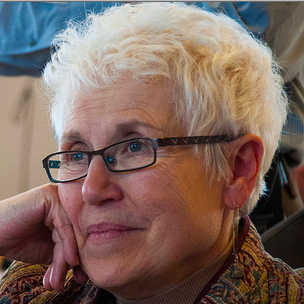
Harriet Friedmann is Professor Emerita of Sociology, University of Toronto. Her publications span several aspects of food and agriculture, notably as co-developer of the historical food regimes approach, and as contributor to debates on family farming. Her recent publications focus on implications for emergent food system governance of long histories of food system transformation across social/natural scales, as cities and capital have reorganized the biosphere and ethnosphere. Her current project is Global Political Ecology of Food. Friedmann was Chair of the Toronto Food Policy Council within Toronto Public Health in the 1990s, and is presently a member. She serves on several editorial boards of food, agriculture, and global change journals and has served on several nonprofit boards, e.g., USC-Canada (Seeds of Survival projects across the world), Toronto Advisory Committee for the FAO-RUAF city-food region project, and the Toronto Seed Library. Since retiring she has been Visiting Scholar or Professor at Aix-Marseille University, Carleton University, Institute of Social Studies in The Hague, Federal Rural University of Rio de Janeiro, and CIRAD (Agronomic Research for Development) in Montpellier, France.
March 21: Grain by Grain: A Quest to Revive Ancient Wheat, Rural Jobs, and Healthy Food with Bob Quinn and Liz Carlisle and Bob Quinn
By Salloum on February 13, 2019
March 21: Grain by Grain: A Quest to Revive Ancient Wheat, Rural Jobs, and Healthy Food with Bob Quinn and Liz Carlisle and Bob Quinn
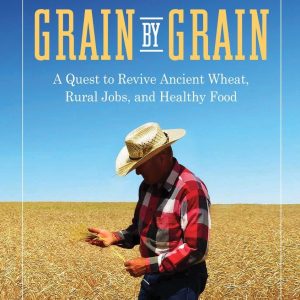
Join organic farmer Bob Quinn and Stanford Lecturer Liz Carlisle for highlights from their new book, Grain by Grain. Drawing on Bob’s 30-year journey in regenerative organic agriculture and renewable energy, they will discuss how transformation of regional food systems can drive big changes over time: creating good green jobs that rebuild rural communities, while providing healthier food and better environmental stewardship. Along the way, they’ll shed some light on the recent epidemic of gluten sensitivity, and offer some suggestions for how to restore a healthy relationship with wheat.
When, Where, and How Much?
- March 21st from 4:00 pm until 6:00 pm
- FNH Building Room 40
- Free for all and light refreshments and ancient grain snacks will be provided.
- Books will be available for purchase courtesy of the UBC Bookstore
About the Presenters:
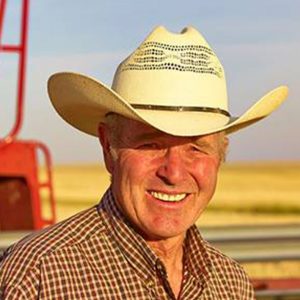
Bob Quinn is an organic farmer near Big Sandy, Montana, and a leading green businessman. He served on the first National Organic Standards Board, and has been recognized with the Montana Organic Association Lifetime of Service Award, The Organic Trade Association Organic Leadership Award, and Rodale Institute’s Organic Pioneer Award. His enterprises include the ancient grain business Kamut International and Montana’s first wind farm.
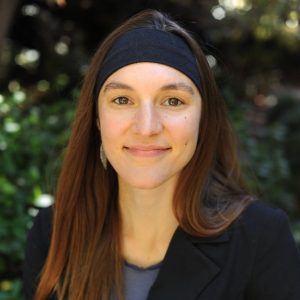
Liz Carlisle is a Lecturer in the School of Earth, Energy, and Environmental Sciences at Stanford University, where she teaches courses on food and agriculture, sustainability transition, and environmental communication. She holds a PhD in Geography from UC Berkeley and a BA in Folklore and Mythology from Harvard University, and she formerly served as Legislative Correspondent for Agriculture and Natural Resources in the Office of US Senator Jon Tester.
Researcher Profile: CSFS Associate Navin Ramankutty
By justin lee on February 7, 2019
Researcher Profile: Navin Ramankutty
CSFS Associate, Professor and Canada Research Chair in Global Environmental Change and Food Security, UBC School of Public Policy and Global Affairs and the Institute for Resources, Environment, and Sustainability

What does your current research focus on?
I study food security and sustainability on a global scale, with a few of my students focusing on regions like India, Latin America, and Canada. I am broadly interested in examining how agriculture influences global environmental change and how to modify our farming systems to make them more sustainable. More specifically, my research works with global data sets. We compile global data on agriculture and land use practices from around the world looking at factors like water and nutrient requirements, yields and amount of mechanization. We analyze these data to examine how agriculture is changing in different parts of the world and how different farming characteristics or management systems influence environmental outcomes.
What’s next for this research?
The big next steps are trying to understand what important questions need to be answered and what sources of data exist to answer these questions. In my research group, we’ve recently started working with microdata (finer scale census or survey data), which is more detailed than what we have previously worked with. We are now going through the data to find out what common variables have been collected to determine what questions have been asked of farmers worldwide. This new data will allow us to explore different questions than what we have been able to in the past.
In the literature, there is a hypothesis that having more diversified agriculture will make agriculture more climate resilient. With this data, we can now ask whether that is true or not. Previously, we have been looking into crop diversification on a large scale. This new microdata may enable us to look at these factors at the farm level.
How does your global research apply in a local or regional sense?
Our findings on a global scale have indicated that sustainability solutions are very context dependent as no average result applies to the world. We find that depending on the climate and the soils and the management practices we get different outcomes. The global scale work is useful to get a general picture and to define broadscale patterns. I would not say that my global scale work directly applies locally but it has relevance to the kinds of questions you might ask locally. You always need to be working at the scale where you want to answer questions. And in that context, I have started doing some more regional-to-local scale work in Canada, India, and Latin America, through the specific interests of my students.
Why does this work matter to you?
Food is a fundamental necessity of life. Generally, almost everyone recognizes that climate change is a major global environmental problem but few people realize that the food we eat is a major cause also. Making agriculture sustainable is vital, not just to solve the environmental problems, but also to continue providing the nutrition we need.
How important is the Centre for Sustainable Food Systems (CSFS) at UBC Farm to your work?
The CSFS builds bridges across the university. At UBC we tend to work within faculties and there is not a lot of cross-fertilization across faculties. For example, I study food systems but I do not have an appointment with the Faculty of Land and Food Systems. Being associated with the CSFS has allowed me to connect with colleagues in Land and Food Systems and across UBC.
What should people know about the UBC Farm that they probably don’t know?
They should know that it also acts as a hub for activity on campus. Earlier on, I was not aware of all of the activities that go on at the UBC Farm until I got more involved. There are educational activities and community outreach activities, like the farm camp that my kid went to this summer and the Saturday Farm Markets I go to with my family. I see a lot of value in the UBC Farm’s ability to reach out to the community.
Bird Survey – Vancouver Natural History Society
By Salloum on February 3, 2019
Bird Survey – Vancouver Natural History Society

We welcome people with all levels of birding knowledge to join in the Nature Vancouver monthly bird survey around the UBC Farm. All that is required is an interest in birds! Bring binoculars if you have them.
The monthly survey takes from two to four hours, depending on weather conditions and how many birds we see. The route walked circles the perimeter of the fields and through the forest trail. For further information see the Nature Vancouver website www.naturevancouver.ca under Ongoing Nature Walks.
The number of bird species observed over the past ten years of surveys is close to one hundred species. To view a list of bird species by month go to the eBird Canada website, under BC Hotspots, Vancouver UBC-South Campus Farm.
Georgia Straight features CSFS
By eileen huang on January 30, 2019
Georgia Straight features CSFS
The Centre for Sustainable Food Systems at UBC Farm is a Living Laboratory.
The Georgia Straight article mentioned how the Centre for Sustainable Food Systems helps farmers adapt to climate change and research ways to overcome the challenges brought on by climate change.
“The 24-hectare UBC farm at the university’s Point Grey campus is a living laboratory for researchers to experiment on new methods for climate-smart agriculture.”
UBC Farm understands the concerns farmers have and are working to teach them how to farm with climate changes.
Check out the article.
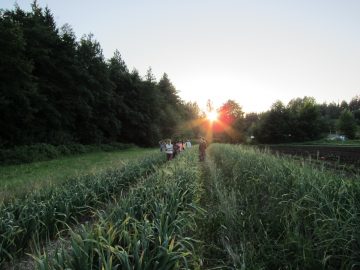
Making Leather from Salmon Skin
By morgan hamilton on January 30, 2019
Making Leather from Salmon Skin
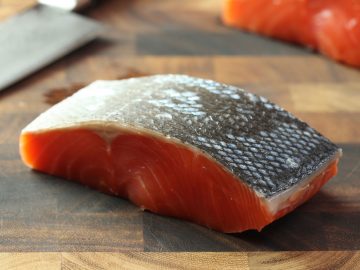
About this Workshop
Work with a new material and learn a new skill in this beginner-friendly salmon leather workshop! Fish leather has been made traditionally by coastal and river people all over the world, and continues as a specialty industry today in Iceland, Australia, and parts of Europe. Fish skins are smaller and easier to tan than larger skins, but follow the same principles. This three hour workshop will take you through the process of selecting, scraping, tanning, and softening fish skins into leather. Instructor Rebecca Graham will share her sample book, handouts, and tips on where to buy or find the supplies you need to make fish leather at home. Participants will take home one finished piece of fish leather and one more to soften at home.About the Instructor
Rebecca Graham is an environmental artist who specializes in connecting people with land. As a leader of groups of all ages, large and small, she shines a vibrant light on how natural materials can become our portals to meaningful connections to human history, culture, and nature. Rebecca’s background includes studies in environmental ethics and agriculture at the University of British Columbia and abroad; she holds a BFA from the Nova Scotia College of Art and Design, and a Diploma in Fashion Design from the Blanche Macdonald Centre. In 2016 she was the recipient of a Mayor’s Art Award as the Emerging Artist in Craft and Design.
Date and Time
Wednesday, March 6th | 6:00 – 8:30 pm (3 hours)
Location
UBC Farm
3461 Ross Drive, Vancouver BC
Cost
$45 ($38 student pricing) + GST
Register for this workshop
Feeding Growth Coffee Series: Organic, Fairtrade, B-Corp – What Makes Sense for my Food Business?
By Salloum on January 10, 2019
Feeding Growth Coffee Series: Organic, Fairtrade, B-Corp – What Makes Sense for my Food Business?
A series of dialogues about food business subjects you care about, in collaboration with engaged food industry partners, and with the Feeding Growth recipe you like: personable and caring food industry mentors; inspiring yet mighty practical insight; and a helpful community of progressive change-makers.
Organic, Fairtrade, B-Corp, etc. What Makes Sense for my Food Business?
Consumers want brands they can trust. Certifications (organic, fairtrade, b-corp, etc.) can help you communicate your high business standards and take advantage of market opportunities. But which one is right for your business? Which one will best position you to adapt to an ever-changing market? Join Feeding Growth’s seasoned food business leaders Carmen Wakeling (Eat More Sprouts) and Ian Walker (Left Coast Naturals; Hippie Snacks) to get vital insight on how they made the decision to undertake certifications.
About Carmen Wakeling: We are fairly sure Carmen’s name comes up when searching for a “force of nature” definition. Carmen has been the CEO & co-owner of Eat More Sprouts for 32 years. She’s also a leader with the Small Scale Food Processors Association, Certified Organic Association of BC, Pacific Agricultural Certification Society, and International Sprout Growers Association.
About Ian Walker: Ian’s business sharpness, eagerness to learn, and generosity know no boundary. Co-founder and owner of Left Coast Naturals for 27 years, and more recently of Hippie Snacks, Ian has a keen understanding of the ups and downs of entrepreneur life. At the head of a B-corporation, Ian is also familiar with what it takes to run a business that aligns with what your values are as a person.
Why come?
- Ask experts your burning questions about what it takes for progressive food businesses to succeed.
- Create the structure of the discussion: your questions, your approach, your crew of like-minded progressive food entrepreneurs.
- Learn from peers who deal with similar opportunities and challenges in the natural, organic, specialty food business sphere.
- Cement key relationships in the progressive food space.
- Beer anyone?
Register for the event here.
Oct. 2: Big Food ‘Feeding’ the Hungry Poor? Economic Democracy, Food Justice and Human Rights
By Salloum on January 9, 2019
Oct. 2: Big Food ‘Feeding’ the Hungry Poor? Economic Democracy, Food Justice and Human Rights
Join us for a triple book launch to explore the topics of civil society, public policies and the right to food with Andy Fisher (Big Hunger), Annette Aurélie Desmarais (Public Policies for Food Sovereignty) and Graham Riches (Food Bank Nations). Tuesday, October 2, 2018 2:00 p.m. – 3:30 p.m. C.K. Choi Building – Room 120, 1855 West Mall Light refreshments with be provided, please RSVP. Our speakers include: Andy Fisher, a founding director of the Community Food Security Coalition in the USA and author of Big Hunger: The Unholy Alliance between Corporate America and Anti Hunger Groups (MIT Press, 2017). Annette Aurélie Desmarais, CRC in Human Rights, Social Justice and Food Sovereignty, University of Manitoba and co-editor of Public Policies for Food Sovereignty: Social Movements and the State (Routledge, 2017). Graham Riches, emeritus professor of social work, UBC and author of Food Bank Nations: Poverty, Corporate Charity and the Right to Food (Routledge, 2018). Moderated by Laura Castrejon Violante, ISGP PhD student, Land Use and Global Environment (LUGE) lab, School of Public Policy and Global Affairs and Liu Scholar. Copies of books will be available to purchase. Co-hosted by: UBC School of Social Work, UBC School of Public Policy & Global Affairs, the Liu Institute for Global Issues, the Food Systems Network (a Liu Scholars and CSFS group), and the Centre for Sustainable Food Systems (CSFS) at the UBC Farm.
Infant Food Insecurity in Canada
By Joyce Liao on December 15, 2018
Infant Food Insecurity in Canada

Researcher Dr. Lesley Frank, professor of sociology at Acadia University and a 2018 CSFS visiting scholar, was featured on CBC’s The Current talking about her work on infant food insecurity in Canada.
Dr. Lesley Frank first became involved in infant feeding issues as an outreach worker, promoting the “Breast is Best” campaign that advocates mothers to breastfeed their babies. During this time, she noticed a breastfeeding paradox, where she noted women in poverty struggling to breastfeed due to a variety of reasons such as mothers having or perceiving low nutritional intake, needing to return immediately to work postpartum, and a general lack of funds and support.
Dr. Frank found that poor mothers have a hard time finding formula due to its price and unreliable availability in food banks, giving rise to an informal sharing and trading economy online, all underscoring the dire situation of food insecurity for infants in poverty.
Listen to The Current documentary.
Market Recipe Blog: Fall Fair 1st Place Pie (Strawberry Lavender)
By Joyce Liao on December 8, 2018
Market Recipe Blog: Fall Fair 1st Place Pie (Strawberry Lavender)
With a dozen pies to sample and deliberate over, it was hard for our judges to pick a winner but at this year’s UBC Farm Fall Fair the first place prize went to this delicious Strawberry Lavender pie from entrant Michael Annejohn! You can recreate the flavour at home with this recipe.
The Strawb-man Argument (Strawberry Lavender Pie)
Recipe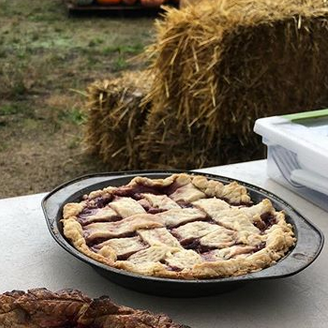
- 1/2 cup butter
- 2 tsp dried or fresh lavender flowers
- 2/3 cup shortening
- 2 2/3 cups flour
- Ice water
- Salt
- 4 large Bartlett pears
- 1 jar strawberry jam (home made with local berries is best!)
Instructions
- In double boiler, melt 1/2 cup butter. Add 2 tsp dried or fresh lavender flowers. Let simmer on low heat for 1/2 hour. Sift out flowers and chill butter well.
- To form dough cut chilled lavender-butter, and 2/3 cups shortening into tiny cubes. Cut into 2 2/3 cups flour, adding a pinch of salt. Add ice water as necessary. Separate dough into 2 equal parts and chill at least 1 hour.
- Form 1 ball of dough into circle for pie base. Place in pie pan. Cut 4 large Bartlett pears into pan. Mix 1 jar strawberry jam with enough water to make runny and pour over pears. Mix gently. Use second ball of dough to cover as desired.
- Bake at 450 for 30 mins, and then at 350 for another 15-25 mins. Remove when crust is lightly browned and knife slides through pie easily.
Pick up produce at any of our three weekly markets: Tuesdays 4-6:30PM at the UBC Farm, Wednesdays 11:30AM-1:30PM at the UBC Bookstore, and Saturdays 10AM-2PM at UBC Farm. Learn more about our produce and browse other recipes in our Market Recipe Blog. Receive regular market recipes from our newsletter here.